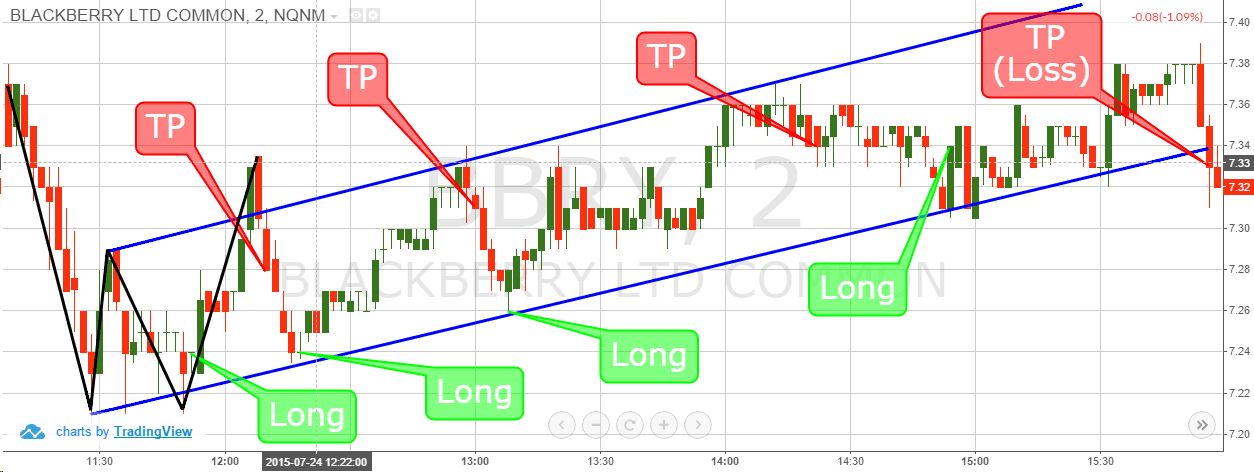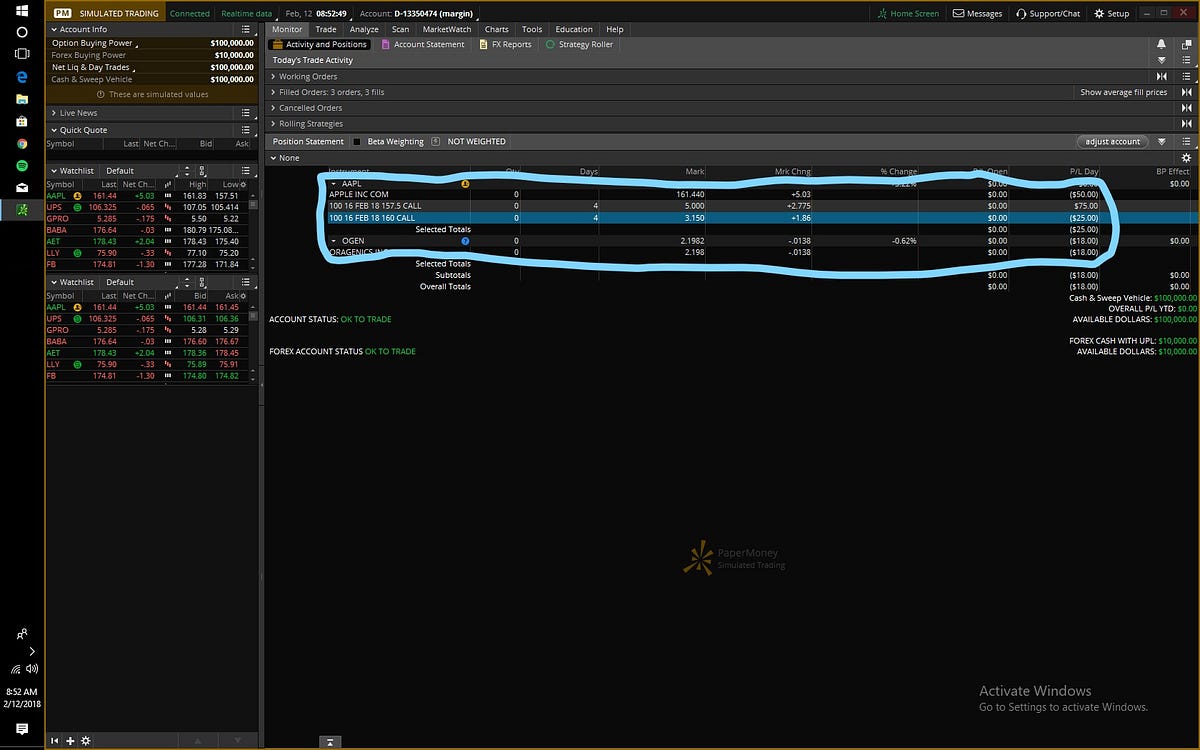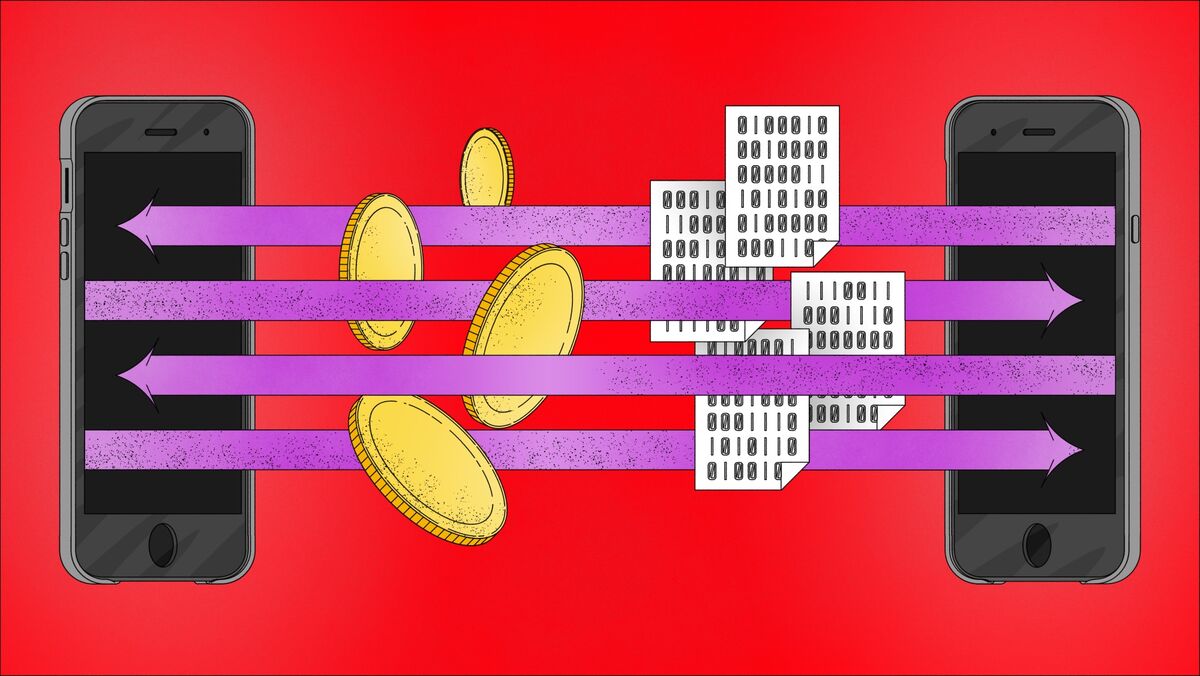Introduction
Welcome to the exciting world of trading! Whether you’re a novice looking to dip your toes into the market or an experienced trader seeking to refine your skills, this comprehensive guide will take you through the essential steps to become a successful trader. Trading can be a highly rewarding endeavor, offering both financial gains and the thrill of making well-informed decisions in fast-paced markets.
Before we get started, it’s important to understand that trading involves buying and selling various financial instruments, such as stocks, currencies, commodities, and derivatives, with the aim of profiting from price movements. While trading can be profitable, it also carries inherent risks and requires thorough understanding, preparation, and discipline.
In this guide, we will explore the fundamental aspects of trading, including selecting the right brokerage platform, setting up a trading account, and developing a solid trading plan. We will delve into the realms of fundamental and technical analysis, risk management, and successful trading strategies.
Additionally, we will discuss the importance of utilizing trading tools and indicators, monitoring trades, practicing emotional discipline, and staying informed about market news and updates. We will also highlight the significance of learning from successful traders and evaluating and adjusting your trading performance.
Trading is a journey that requires continuous learning, adaptability, and patience. By following this step-by-step guide, you will gain the knowledge and skills needed to navigate the markets and make informed trading decisions.
So, let’s embark on this exciting adventure together and unlock the world of trading!
Step 1: Understanding the Basics of Trading
Before diving into the world of trading, it’s crucial to have a solid understanding of the basics. This step lays the foundation for your trading journey and ensures you have a comprehensive grasp of the key concepts and terminology. Here are some essential aspects to consider:
- Market Types: The first thing you should familiarize yourself with is the different market types. The most common include stocks, currencies (forex), commodities, and derivatives. Each market has its nuances, risk factors, and investment opportunities.
- Risk and Reward: Trading involves taking risks, and it’s crucial to understand the relationship between risk and reward. Higher risk can potentially lead to higher returns, but it also exposes you to greater potential losses. It’s important to develop a risk management strategy to protect your capital.
- Timeframes: Traders operate across different timeframes, ranging from day trading (holding positions for a few minutes to a few hours) to swing trading (holding positions for a few days to a few weeks) and long-term investing (holding positions for months to years). Each timeframe requires a different approach and mindset.
- Order Types: Orders are instructions to buy or sell assets in the market. Understanding the various order types, such as market orders, limit orders, stop orders, and trailing stops, is essential in executing trades effectively and efficiently.
- Leverage: Leverage allows traders to control larger positions with a smaller investment. While leverage can increase potential profits, it also magnifies potential losses. Therefore, it’s crucial to use leverage responsibly and understand the associated risks.
By gaining a strong understanding of these fundamentals, you will be equipped with the knowledge necessary to navigate the trading landscape. Remember, trading is a continuous learning process, so it’s important to stay curious and open to expanding your knowledge as you progress in your trading journey.
Step 2: Choosing the Right Brokerage Platform
Choosing the right brokerage platform is a crucial step in your trading journey. A brokerage platform acts as the intermediary between you and the financial markets, providing access to trading instruments, order execution, and account management. Here are some key factors to consider when selecting a brokerage platform:
- Regulation and Safety: Ensure that the brokerage platform you choose is regulated by reputable financial authorities. Regulation serves as an added layer of security and helps protect your funds.
- Trading Instruments: Consider the range of trading instruments available on the platform. Ideally, the platform should offer a wide variety, including stocks, forex, commodities, and indices, allowing you to diversify your trading portfolio.
- Trading Platforms: Evaluate the trading platforms provided by the brokerage. Look for a user-friendly interface with advanced charting capabilities, real-time market data, customizable indicators, and order management tools. Popular platforms include MetaTrader, cTrader, and proprietary platforms developed by the brokerage itself.
- Execution and Spreads: Execution speed and spreads play a vital role in trading. Opt for a brokerage that offers fast order execution and competitive spreads. Lower spreads can significantly impact your profitability, especially for high-frequency traders.
- Customer Support: It’s essential to choose a brokerage that offers reliable and accessible customer support. Look for platforms that provide multiple channels of communication, such as phone, email, and live chat, and ensure they have knowledgeable support representatives to assist you promptly.
- Education and Research: Consider the educational resources and research tools provided by the brokerage. Look for platforms that offer tutorials, webinars, market analysis, and trading guides to help you improve your trading skills.
- Account Types and Minimum Deposits: Evaluate the different account types offered by the brokerage and the minimum deposit requirements. Ensure that they align with your trading goals and financial capabilities.
- Additional Features: Some brokerages offer additional features like social trading, copy trading, and access to expert trading signals. These features can enhance your trading experience and provide valuable insights.
Take your time to research and compare different brokerage platforms. Consider your trading style, preferences, and specific requirements. Reading reviews and seeking recommendations from experienced traders can also help in making an informed decision.
Remember that choosing a reliable brokerage platform is essential for the success of your trading journey. It’s worth taking the time to find one that offers the necessary features, support, and safety you need to trade with confidence.
Step 3: Setting Up a Trading Account
Once you’ve chosen a brokerage platform, the next step is to set up a trading account. This involves completing the necessary registration process and providing the required documentation. Here’s a guide to help you navigate the process:
1. Registration: Visit the brokerage platform’s website and locate the “Open an Account” or “Sign Up” button. Click on it to initiate the registration process.
2. Personal Information: Fill in your personal details, including your full name, email address, phone number, and residential address. Ensure that the information provided is accurate and matches the supporting documents you will be required to submit.
3. Account Type: Select the account type that best suits your trading needs and financial goals. Common account types include individual accounts, joint accounts, corporate accounts, and Islamic accounts (in accordance with Shariah principles). Each account type may have specific requirements and features.
4. Documentation: Most brokerage platforms require you to submit certain documents to verify your identity and address. This usually includes a copy of your identification documents (such as a passport or driver’s license) and a recent utility bill or bank statement. Follow the platform’s instructions for document submission, as it may vary.
5. Account Verification: After submitting the required documents, the platform will typically conduct a verification process to ensure the accuracy and authenticity of your information. This process may take several days, depending on the platform and the volume of applications they receive.
6. Funding Your Account: Once your account is verified, you can proceed to fund it. The brokerage platform will provide various deposit methods, such as bank transfers, credit/debit cards, and electronic payment systems. Select the most convenient method and follow the platform’s instructions to fund your account.
7. Know Your Customer (KYC) Requirements: As part of regulatory compliance measures, brokerage platforms have KYC requirements in place. This may involve answering additional questions or providing further documentation to assess your trading experience, financial knowledge, and risk tolerance.
8. Account Security: Prioritize the security of your trading account. Enable two-factor authentication, use strong passwords, and regularly update your login credentials. Additionally, familiarize yourself with the platform’s security measures and procedures for account recovery in case of any unforeseen circumstances.
It’s important to note that the specific steps and requirements may vary between brokerage platforms and jurisdictions. Always follow the instructions provided by the platform and seek assistance from their customer support if you encounter any difficulties during the account setup process.
Once your trading account is successfully set up, you’re ready to proceed to the next step of developing a trading plan and implementing your trading strategies.
Step 4: Developing a Trading Plan
A well-defined trading plan is essential for consistent success in the markets. It serves as your roadmap, outlining your trading goals, strategies, and risk management techniques. Here are the key elements to consider when developing a trading plan:
1. Goals and Objectives: Begin by defining your trading goals and objectives. Are you looking to generate regular income, grow your capital over the long term, or achieve a specific financial target? Clearly outlining your goals will help you stay focused and make informed trading decisions.
2. Trading Style and Strategy: Determine your preferred trading style. Are you more inclined towards day trading, swing trading, or long-term investing? Additionally, define your trading strategy, such as trend following, breakout trading, or contrarian trading. Align your style and strategy with your personality, time availability, and risk tolerance.
3. Risk Management: Implementing effective risk management techniques is vital for preserving capital and mitigating losses. Establish your risk tolerance and determine your position sizing, stop-loss levels, and risk-to-reward ratios for each trade. Adhere to these rules diligently to protect yourself from excessive risk.
4. Market Analysis: Determine the types of analysis you will utilize in your trading plan. Fundamental analysis involves evaluating economic indicators, company financials, and news events, while technical analysis focuses on chart patterns, indicators, and price action. Decide which approach or combination of approaches you will use to make trading decisions.
5. Entry and Exit Criteria: Define the specific criteria that will trigger your entry and exit from trades. This may include technical indicators, chart patterns, support and resistance levels, or fundamental factors. Having clear rules for entry and exit will help you avoid emotional decision-making and maintain discipline in your trades.
6. Trading Journal: Keeping a trading journal is crucial for tracking and evaluating your performance. Record details of each trade you take, including the instrument, entry and exit points, reasons for the trade, and the outcome. Regularly review your trading journal to learn from your successes and failures and refine your trading strategies.
7. Review and Adaptation: Periodically review your trading plan and assess its effectiveness. Identify any areas that need improvement and make necessary adjustments to optimize your trading approach. The markets are dynamic, and adaptation is essential to stay ahead.
8. Mental and Emotional Preparation: Trading can be psychologically challenging. Develop strategies to manage your emotions and maintain a calm and disciplined mindset during uncertain market conditions. Psychological preparedness is just as important as technical and fundamental analysis.
Remember, a trading plan is not set in stone and should be flexible enough to adapt to changing market conditions. Regularly review and refine your plan as you gain experience and encounter different market scenarios.
By developing a well-thought-out trading plan, you empower yourself with a structured approach to navigate the markets, enhance your decision-making process, and increase your chances of achieving consistent profitability.
Step 5: Mastering Fundamental Analysis
Fundamental analysis is a key component of trading and involves analyzing economic indicators, company financials, and market news to make informed trading decisions. This step focuses on understanding and mastering the fundamentals of fundamental analysis. Here are the key aspects to consider:
1. Economic Indicators: Economic indicators provide insights into the overall health and performance of an economy. Learn to analyze indicators such as GDP growth, inflation rates, interest rates, employment data, and consumer confidence. Understand how these indicators influence various asset classes, such as stocks, currencies, and commodities.
2. Company Financials: Dive into the world of company financials by studying financial statements such as income statements, balance sheets, and cash flow statements. Learn to interpret key ratios such as earnings per share (EPS), price-to-earnings (P/E) ratio, and return on equity (ROE). Assessing a company’s financial health provides valuable insights into its potential for growth and profitability.
3. News Analysis: Stay informed about market news and developments that may impact the assets you trade. Keep track of economic events, earnings reports, mergers and acquisitions, regulatory changes, and geopolitical factors. Develop the ability to filter and analyze news to determine its relevance and potential impact on the markets.
4. Fundamental Analysis Tools: Utilize a range of fundamental analysis tools to aid your research. Economic calendars help you keep track of upcoming economic events, while financial websites and news portals provide essential data and analysis. Additionally, access research reports and expert opinions to gain further insights into specific companies and markets.
5. Industry and Sector Analysis: Understand the dynamics and trends of different industries and sectors. Analyze factors such as market share, competition, technological advancements, and regulatory factors that influence specific sectors. Industry analysis helps identify potential investment opportunities and assess the risk factors associated with specific industries.
6. Analyst Reports and Recommendations: Study analyst reports and recommendations to gain insights into market sentiment and expert opinions. Consider the analysis provided by reputable analysts, but conduct your own research and analysis to make independent decisions.
7. Macroeconomic Factors: Consider the broader macroeconomic factors that can impact the markets. Factors such as global economic outlook, trade policies, central bank decisions, and political events can significantly influence asset prices. Stay updated on these factors and understand their potential impact on your trades.
8. Continuous Learning: Fundamental analysis is a vast and evolving field. Stay committed to continuous learning and development. Read books, attend webinars, and participate in courses to deepen your understanding and keep up with the latest trends and methodologies in fundamental analysis.
Mastering fundamental analysis takes time and practice. Combine your fundamental analysis skills with technical analysis to make well-rounded trading decisions that consider both the qualitative and quantitative aspects of the market.
Remember, fundamental analysis provides a long-term perspective on the markets and helps you identify opportunities based on a company’s intrinsic value. It serves as the backbone for successful investing and trading strategies.
Step 6: Becoming Proficient in Technical Analysis
Technical analysis is a valuable skillset for traders as it involves analyzing price charts and using various indicators and patterns to forecast future price movements. This step focuses on becoming proficient in technical analysis. Here are the key aspects to consider:
1. Candlestick Patterns: Learn to identify and interpret candlestick patterns, such as doji, hammer, engulfing, and shooting star. These patterns provide valuable insights into market sentiment and potential reversals or continuations in price trends.
2. Support and Resistance: Understand the concept of support and resistance levels. These levels indicate areas where prices are likely to encounter buying or selling pressure. By identifying and analyzing these levels, you can make informed decisions regarding entry, exit, and risk management.
3. Trend Analysis: Identify and analyze the different types of market trends – uptrend, downtrend, and sideways. Use trendlines, moving averages, and trend indicators like the Average Directional Index (ADX) to determine the strength and direction of the trend.
4. Technical Indicators: Familiarize yourself with popular technical indicators, such as the Relative Strength Index (RSI), Moving Average Convergence Divergence (MACD), and Bollinger Bands. Understand their calculations and how they can be used to identify overbought or oversold conditions, trends, and potential reversals.
5. Chart Patterns: Learn to recognize chart patterns, such as triangles, head and shoulders, double tops, and double bottoms. These patterns can provide valuable clues about potential price movements and help you identify entry and exit points for trades.
6. Fibonacci Analysis: Gain an understanding of Fibonacci retracement and extension levels. These levels are based on mathematical ratios and are used to identify potential support and resistance areas in the market.
7. Multiple Timeframe Analysis: Analyze price charts across different timeframes to get a holistic view of the market. Use longer timeframes to identify the overall trend and shorter timeframes for precise entry and exit points.
8. Backtesting and Strategy Development: Apply your technical analysis skills to backtest and develop trading strategies. Use historical data to simulate trades based on your technical analysis approach and evaluate the performance of your strategies.
9. Continuous Learning and Practice: Technical analysis is a skill that requires continuous learning and practice. Stay updated with the latest developments in technical analysis, attend webinars, read books, and participate in trading communities to enhance your knowledge and skills.
Becoming proficient in technical analysis takes time and experience. Combine your technical analysis skills with fundamental analysis to make well-rounded trading decisions that consider both the qualitative and quantitative aspects of the market.
Remember, technical analysis helps you identify trading opportunities based on historical price patterns, trends, and market psychology. It can provide valuable insights and improve your ability to time your trades effectively.
Step 7: Managing Risk and Setting Stop Loss Orders
Effectively managing risk is crucial for every trader’s long-term success. This step focuses on risk management techniques, including setting stop loss orders. Here are the key aspects to consider:
1. Risk Tolerance: Determine your risk tolerance level based on your financial situation, trading goals, and personal comfort. This will guide your risk management decisions and help you determine the appropriate level of risk for each trade.
2. Position Sizing: Calculate the appropriate position size for each trade based on your risk tolerance and the specific trade setup. Avoid risking more than a certain percentage of your trading capital on any single trade to prevent excessive losses.
3. Stop Loss Orders: Set stop loss orders to limit potential losses on trades. A stop loss order is an instruction placed with your broker to automatically sell a security if it reaches a predetermined price level. Determine the stop loss level based on your analysis, taking into account support and resistance levels, volatility, and your risk tolerance.
4. Trailing Stop Loss Orders: Consider using trailing stop loss orders to protect profits and limit losses as a trade moves in your favor. A trailing stop order adjusts the stop price automatically as the market price moves, securing profits if the price reverses and hitting the stop loss level if the price retraces significantly.
5. Risk-to-Reward Ratio: Evaluate the risk-to-reward ratio for each trade before placing it. A favorable risk-to-reward ratio means that the potential reward is higher than the amount of risk taken. Aim for a risk-to-reward ratio of at least 1:2 or higher to ensure that winning trades compensate for potential losing trades.
6. Diversification: Diversify your trading portfolio to spread risk across different assets and markets. Avoid concentrating your trades in a single instrument or sector. Diversification can help protect against substantial losses if one trade or market performs poorly.
7. Risk Management Techniques: Familiarize yourself with various risk management techniques, such as scaling in and out of positions, hedging, and using options strategies. These techniques can help mitigate risk and optimize your trading performance.
8. Emotional Discipline: Stick to your risk management plan and avoid making impulsive decisions based on fear or greed. Emotional discipline is crucial for consistent risk management. Develop strategies to stay rational, manage stress, and avoid overtrading.
9. Regular Evaluation and Adjustments: Regularly evaluate your risk management approach and make necessary adjustments as your trading experience and market conditions evolve. Customize your risk management techniques to suit your trading style and goals.
Remember, managing risk is an ongoing process that requires constant vigilance. By implementing effective risk management techniques, such as setting stop loss orders and managing position sizes, you can minimize potential losses and protect your trading capital.
Step 8: Implementing Successful Trading Strategies
Implementing successful trading strategies is essential for achieving consistent profitability in the markets. This step focuses on the practical aspects of implementing effective trading strategies. Here are the key aspects to consider:
1. Strategy Selection: Choose a trading strategy or multiple strategies that align with your trading goals, risk tolerance, and trading style. Common trading strategies include trend following, breakout trading, mean reversion, and range trading.
2. Backtesting: Backtest your trading strategies using historical data to evaluate their performance and reliability. This helps you gain confidence in the strategy and assess its potential profitability before applying it to live trading.
3. Demo Trading: Practice your trading strategies in a demo or simulated trading environment before risking real money. This allows you to fine-tune your strategy, understand its strengths and weaknesses, and gain experience without incurring financial risk.
4. Entry and Exit Rules: Establish clear and objective entry and exit rules for your trading strategy. This includes identifying specific technical indicators, chart patterns, or fundamental factors that signal entry and exit points. Consistently execute your strategy based on these rules.
5. Risk Management: Integrating risk management into your trading strategies is crucial. Determine the appropriate position size, stop loss levels, and risk-to-reward ratios for each trade based on your risk tolerance and strategy requirements.
6. Trade Execution: Efficient trade execution is essential for successful trading. Develop a trading routine and stick to your plan. Monitor the markets, enter trades at the desired price levels, and execute orders promptly and accurately.
7. Trade Monitoring and Adjustments: Regularly monitor your trades to assess their progress and make necessary adjustments. Follow your predetermined exit rules and consider partial or full profit-taking based on the market conditions.
8. Journaling and Performance Evaluation: Maintain a trading journal to record your trades, including entry and exit points, rationale, and outcomes. Regularly review your journal to identify patterns, strengths, and areas for improvement in your trading strategies. Evaluate your performance and adjust your strategies accordingly.
9. Continuous Learning: Stay updated with market trends, new trading techniques, and evolving market dynamics. Attend webinars, read trading books, and engage with trading communities to expand your knowledge and refine your trading strategies.
Implementing successful trading strategies requires discipline, patience, and continuous improvement. Stick to your plan, remain adaptable, and learn from both successes and failures along the way.
Remember, refining and fine-tuning your trading strategies based on market feedback and your own experiences is crucial for long-term trading success.
Step 9: Utilizing Trading Tools and Indicators
Utilizing trading tools and indicators can significantly enhance your trading experience and decision-making process. This step focuses on the various tools and indicators available to traders. Here are the key aspects to consider:
1. Charting Platforms: Use robust charting platforms that offer a wide range of charting tools and customization options. Popular charting platforms include MetaTrader, TradingView, and NinjaTrader. Customize your charts to suit your trading style and preferences.
2. Technical Indicators: Familiarize yourself with a variety of technical indicators, such as moving averages, oscillators, and volume indicators. Each indicator provides different insights into market trends, price momentum, and potential reversals. Experiment with different combinations to find ones that complement your trading strategy.
3. Trend Lines and Channels: Draw trend lines and channels on your charts to identify key support and resistance levels and visualize market trends. Trend lines are diagonal lines connecting important highs or lows, while channels consist of parallel trend lines that define price movement within a range.
4. Fibonacci Tools: Use Fibonacci retracement and extension levels to identify potential support and resistance areas. These levels are drawn based on mathematical ratios and can act as significant price levels where a trend is likely to reverse or continue.
5. Volume Analysis: Analyze volume patterns to gain insights into the strength of price movements. High volume during price advances or declines can indicate the presence of strong market participation. Volume indicators, such as the Volume Weighted Average Price (VWAP) or On-Balance Volume (OBV), can assist in interpreting volume data.
6. Economic Calendars: Utilize economic calendars to stay informed about upcoming economic events, earnings reports, and other market-moving news. Economic calendars provide a schedule of key events and their expected impact, enabling you to prepare for potential market volatility.
7. Sentiment Indicators: Consider sentiment indicators that gauge the overall sentiment and mood of market participants. These can include indicators like the Fear and Greed Index or put-call ratios. Sentiment indicators can provide insights into market psychology and potential reversals.
8. Algorithmic Trading Tools: Explore algorithmic trading tools that allow you to automate your trading strategies. These tools execute trades based on pre-defined criteria and can help remove emotions from your trading decisions. However, ensure you thoroughly understand the algorithm and test it in different market conditions before relying on it.
9. Simulators and Backtesting Software: Practice your trading strategies and test new ideas using simulators and backtesting software. These tools allow you to trade in a simulated environment or use historical data to evaluate the performance of your strategies without risking real money.
Remember, while trading tools and indicators can be valuable, they should supplement your analysis and not be solely relied upon for trading decisions. It’s important to understand their strengths and limitations and use them in conjunction with your trading strategy and market analysis.
Continuously explore and experiment with different tools and indicators to find the ones that resonate with your trading style and help you make informed trading decisions.
Step 10: Monitoring and Reviewing Trades
Monitoring and reviewing your trades is a critical step in your trading journey. It allows you to assess the performance of your trades, identify areas for improvement, and make necessary adjustments to your trading strategy. Here are the key aspects to consider:
1. Regular Trade Monitoring: Actively monitor your trades after entering them. Keep track of price movements, news events, and any other factors that may influence the trade’s outcome. Monitor your trades in real-time or set alerts to stay informed about significant developments.
2. Trade Journaling: Maintain a trade journal to record details of each trade. Include information such as entry and exit points, profit or loss, the reasoning behind the trade, and lessons learned. A trade journal helps you track your trading performance, review past trades, and gain insights to improve future decision-making.
3. Performance Analysis: Regularly analyze your trading performance to determine your strengths and weaknesses. Evaluate factors such as win/loss ratio, average profit/loss per trade, and the overall profitability of your trading strategy. Identify patterns and trends to enhance your strategy and optimize trading outcomes.
4. Risk and Reward Assessment: Assess the risk-to-reward ratios of your trades. Review whether your risk management strategies effectively preserve capital and if your reward potential justifies the risk. This analysis helps ensure that your trades align with your risk tolerance and trading goals.
5. Reviewing Emotions and Psychology: Reflect on your emotional state during trades and evaluate how it affected your decision-making. Assess whether you adhered to your trading plan or let emotions drive your actions. Recognize any emotional biases, such as fear or greed, and develop strategies to manage and mitigate their impact on future trades.
6. Learning from Mistakes: Embrace mistakes as learning opportunities. Analyze losing trades to understand the reasons behind the losses. Identify any recurring patterns or common errors. Use this knowledge to avoid making the same mistakes in the future and continuously improve your trading skills.
7. Seeking Feedback and Mentorship: Reach out to experienced traders or join trading communities to seek feedback and guidance. Engaging with others who have more experience can offer valuable insights and perspectives on your trades. Learn from their successes and challenges to accelerate your own growth as a trader.
8. Adjusting Trading Strategies: Based on your trade monitoring and performance analysis, make necessary adjustments to your trading strategies. Modify your entry and exit rules, risk management tactics, or other elements of your strategy to align with observed market behavior and improve profitability.
9. Stay Adaptive: Markets evolve, and what worked in the past may not be applicable in the future. Continuously learn and adapt your trading strategies to changing market conditions. Stay updated on market trends, economic indicators, and news events that may impact your trades.
Monitoring and reviewing trades help you become a more disciplined and informed trader. It enables you to make data-driven decisions, learn from experience, and refine your strategies for consistent trading success.
Step 11: Practicing Emotional Discipline in Trading
Practicing emotional discipline is a vital aspect of successful trading. Emotions can cloud judgment and lead to impulsive decision-making, which can have detrimental effects on trading outcomes. This step focuses on developing emotional discipline and managing emotions while trading. Here are the key aspects to consider:
1. Awareness of Emotions: Recognize and acknowledge the emotions you experience while trading, such as fear, greed, excitement, or frustration. Emotional awareness is the first step towards managing and controlling your emotions effectively.
2. Stick to the Trading Plan: Create a well-defined trading plan and adhere to it strictly. A trading plan provides a structured approach and helps reduce emotional decision-making. Trusting in your plan and following it consistently can help you avoid impulsive trades driven by emotions.
3. Set Realistic Expectations: Set realistic expectations about trading outcomes. Understand that losses are a part of trading, and not every trade will be profitable. Unrealistic expectations can lead to disappointment and emotional reactions that may negatively impact your decision-making process.
4. Manage Risk Adequately: Implement risk management techniques to minimize the impact of potential losses. Having a well-defined risk management strategy, including appropriate position sizing and setting stop loss levels, can help alleviate fear of large losses and promote emotional stability in trading.
5. Avoid Overtrading: Overtrading can often be fueled by emotional impulses. Stick to your trading plan and avoid the temptation to make trades out of boredom or an intense desire to recoup losses. It’s essential to wait for high-probability setups that align with your strategy.
6. Take Impersonal Approach: View trades from an objective and impersonal standpoint. Emotional attachment to your trades can blur your judgment. Remember that markets are driven by various factors and are not personally influenced by your individual trades.
7. Practice Patience and Discipline: Cultivate patience and discipline in your trading approach. Avoid jumping into trades impulsively or exiting prematurely due to fear or excitement. Stay focused on your plan and don’t let short-term market fluctuations trigger emotional responses.
8. Take Breaks and Manage Stress: Trading can be mentally and emotionally challenging. Recognize when you need a break and take time to relax and recharge. Manage stress through healthy habits like exercising, meditating, or engaging in activities you enjoy outside of trading.
9. Learn from Mistakes: Embrace losses and mistakes as learning opportunities. Analyze and learn from your trading errors or emotional decisions. Reflect on what triggered the emotions and develop strategies to avoid repeating them in the future.
10. Seek Support: Connect with other traders or join trading communities to share experiences and gain support. Engaging with a supportive community can help you feel understood and provide valuable insights to manage emotions while trading.
Practicing emotional discipline is an ongoing process that requires self-awareness, self-control, and continuous learning. By managing your emotions effectively, you can make rational and objective trading decisions, leading to more consistent trading results.
Step 12: Keeping Up with Market News and Updates
Staying current with market news and updates is crucial for making informed trading decisions. This step emphasizes the importance of staying informed and provides strategies to keep up with market developments. Here are the key aspects to consider:
1. Real-Time Market Data: Utilize real-time market data to stay updated on price movements, trading volumes, and other market indicators. Platforms and financial news websites often offer real-time quotes and charts to provide you with up-to-the-minute information.
2. Economic Calendars: Refer to economic calendars to stay informed about upcoming economic events, such as GDP releases, central bank meetings, or employment reports. Economic calendars provide the schedule of these events, their impact on the markets, and the expected outcomes.
3. Financial News Sources: Follow reputable financial news sources that provide relevant market news and analysis. Platforms like Bloomberg, CNBC, or Financial Times offer comprehensive coverage of global financial markets, economic developments, and market trends.
4. Social Media: Engage with financial influencers, market commentators, and reputable traders on social media platforms such as Twitter or LinkedIn. Follow industry experts and join trading communities to access valuable insights and be part of discussions on market trends and analysis.
5. Analyst Reports and Research: Read analyst reports and research provided by reputable financial institutions. These reports often offer expert analysis and predictions for specific stocks, sectors, or markets. Maintain a critical mindset and consider multiple perspectives before making trading decisions.
6. Trading Newsletters and Blogs: Subscribe to trading newsletters and blogs that provide regular market updates, trading strategies, and educational content. These resources can help you stay informed and provide alternative viewpoints for your analysis.
7. Podcasts and Webinars: Listen to trading podcasts or participate in webinars to access valuable insights and educational content. Industry experts and successful traders often share their experiences, strategies, and market perspectives through these mediums.
8. Fundamental and Technical Analysis: Conduct your own fundamental and technical analysis to understand how market news and updates affect specific assets. Analyze how news events, earnings reports, or economic data impact price movements and adjust your trading strategy accordingly.
9. Develop a News Filtering System: News can be overwhelming and not all information may be relevant or reliable for your trading decisions. Develop a system to filter out noise and focus on the news that directly affects your trading instruments or aligns with your trading strategy.
10. Continuous Learning and Adaptation: Stay committed to continuous learning and keep up with changes in the market. Markets are dynamic, and it’s important to adapt your approach based on new information, shifts in market sentiment, and evolving trends.
By staying informed and up-to-date with market news and updates, you can make more informed trading decisions and position yourself to take advantage of potential opportunities in the markets.
Step 13: Learning from Successful Traders
Learning from successful traders is a valuable opportunity to gain insights, strategies, and wisdom that can accelerate your own trading journey. This step emphasizes the importance of studying and drawing inspiration from accomplished traders. Here are the key aspects to consider:
1. Read Trading Books: Explore books written by successful traders who have shared their experiences, strategies, and philosophies. Books like “Market Wizards” by Jack D. Schwager or “Reminiscences of a Stock Operator” by Edwin Lefèvre provide valuable lessons and perspectives from seasoned traders.
2. Attend Trading Conferences and Seminars: Participate in trading conferences, seminars, and workshops led by successful traders and industry experts. These events provide a platform to learn directly from experienced traders, network with like-minded individuals, and gain exposure to different trading approaches.
3. Follow Trading Blogs and Websites: Stay connected with popular trading blogs and websites that offer insights, analysis, and trade ideas shared by successful traders. Explore platforms such as Investopedia, DailyFX, or Seeking Alpha, which provide valuable educational resources and market commentary from industry professionals.
4. Mentorship and Coaching: Seek mentorship or coaching from experienced traders who are willing to share their knowledge and guide you in your trading journey. A mentor can provide personalized guidance, offer constructive feedback, and help you navigate challenges based on their own experiences.
5. Online Trading Communities: Engage with online trading communities and forums where traders discuss strategies, share trade analysis, and offer support. Platforms like Reddit, TradingView, or Forex Factory host active communities where traders interact, learn, and exchange ideas.
6. Follow Successful Traders on Social Media: Connect with successful traders on social media platforms such as Twitter or LinkedIn. Follow their insights, posts, and analysis to gain valuable market perspectives and learn from their approaches and experiences.
7. Podcasts and Webinars: Listen to trading podcasts and participate in webinars hosted by successful traders. Many traders share their strategies, experiences, and insights in these audio or visual formats, providing practical knowledge and inspiration for your own trading journey.
8. Analyze Trading Interviews and Case Studies: Study interviews and case studies of successful traders to understand their decision-making processes, money management techniques, and risk management strategies. Identify common traits and practices that contribute to their success and consider how you can integrate them into your own trading approach.
9. Practice Virtual Trading: Utilize virtual trading platforms that simulate real-market conditions. Practice replicating the strategies and approaches of successful traders in a risk-free environment. This allows you to test and refine your skills before implementing them with real money.
10. Continuously Learn and Adapt: Stay curious, open-minded, and committed to ongoing learning. The markets are constantly evolving, and successful traders adapt their approaches accordingly. Continuously expand your knowledge, refine your strategies, and embrace new concepts and ideas.
Learning from successful traders provides invaluable insights, inspiration, and practical knowledge to improve your own trading skills and strategies. By studying their approaches and experiences, you can enhance your decision-making process and increase your chances of achieving trading success.
Step 14: Evaluating and Adjusting Trading Performance
Evaluating and adjusting your trading performance is a crucial step in continuously improving your trading skills and results. This step focuses on objectively assessing your performance and making necessary adjustments. Here are the key aspects to consider:
1. Tracking Key Performance Metrics: Identify and track key performance metrics that reflect your trading performance. These metrics may include win/loss ratio, average profit/loss per trade, maximum drawdown, and overall return on investment. Monitoring these metrics helps you measure your progress and identify areas for improvement.
2. Reviewing Trade Data: Analyze your trade data, including entry and exit points, timeframes, and trade outcomes. Look for patterns and trends in your trades, such as specific chart patterns or indicators that have consistently worked in your favor. Assess whether your trades align with your trading plan and strategy.
3. Performance Analysis: Evaluate your overall performance by comparing actual results against your expectations. Assess whether your trading strategy is producing the desired outcomes, and identify any discrepancies or areas where you may be falling short. This analysis helps you identify strengths, weaknesses, and opportunities for improvement.
4. Learning from Mistakes: Review losing trades to understand the reasons behind the losses. Identify any recurring mistakes or patterns in your decision-making process. Use the insights gained from mistakes to refine your trading strategy, risk management, and emotional discipline.
5. Adjusting Risk Management: Evaluate your risk management approach and adjust it as necessary. Assess whether your position sizing, stop-loss levels, and risk-to-reward ratios are effectively controlling risk and preserving capital. Modify your risk management strategy based on your risk tolerance, market conditions, and performance analysis.
6. Refining Trading Strategies: Based on your performance analysis, make necessary adjustments to your trading strategies. Identify areas where your strategies may need refinement or enhancement. Consider incorporating new indicators, refining entry and exit rules, or exploring different timeframes to improve your trading approach.
7. Ongoing Learning and Education: Continue to expand your knowledge and skills through learning and education. Stay updated with market developments, industry trends, and new trading techniques. Attend webinars, read trading books, or seek out courses that focus on areas where you can enhance your abilities.
8. Journaling and Trade Review: Maintain a trading journal to record your thoughts, observations, and lessons learned from each trade. Regularly review your journal to identify patterns and areas for improvement. Adjust your trading style or approach based on the insights gained from self-reflection.
9. Seeking Feedback: Seek feedback from experienced traders or mentors who can provide objective perspectives on your trading performance. Share your trade data and performance metrics and discuss areas where you may need guidance or advice. Constructive feedback can help you identify blind spots and make necessary adjustments.
10. Continual Improvement: Embrace the mindset of continual improvement. Recognize that trading is a journey of learning and growth, and success comes from consistent effort and refinement. Maintain discipline, persistence, and a willingness to adapt as needed.
By regularly evaluating and adjusting your trading performance, you can enhance your skills, minimize weaknesses, and optimize your trading outcomes. Stay committed to self-improvement and strive for continuous growth as a trader.
Conclusion
Congratulations! You have reached the end of this comprehensive guide on how to become a successful trader. Throughout the steps outlined, you have gained valuable insights and strategies to navigate the intricate world of trading. From understanding the fundamentals to developing a trading plan, mastering technical and fundamental analysis, managing risk, and staying informed with market updates, you have equipped yourself with the knowledge and tools necessary for success.
However, it’s important to remember that becoming a proficient trader is a continuous learning process. The journey doesn’t end here; it evolves as you gain experience and adapt to changing market conditions. Embrace the mindset of ongoing improvement, continually refine your strategies, and stay up-to-date with industry trends and developments.
Additionally, practicing emotional discipline, managing risk, and learning from successful traders are key elements for sustained success. By cultivating emotional resilience, staying objective, and being open to learning from both wins and losses, you can navigate the ups and downs of the market with composure.
Remember, always prioritize risk management and set realistic expectations. Trading involves risks, and not every trade will be profitable. Focus on long-term profitability and consistent growth rather than chasing short-term gains.
Lastly, seek mentorship, connect with trading communities, and engage with experienced traders. Learning from others can provide valuable insights and perspectives to refine your trading approach and accelerate your progress.
With persistence, discipline, and continuous learning, you have the potential to become a successful trader in the dynamic world of financial markets. Embrace the challenges, celebrate the victories, and never stop striving for improvement. Best of luck on your trading journey!

























